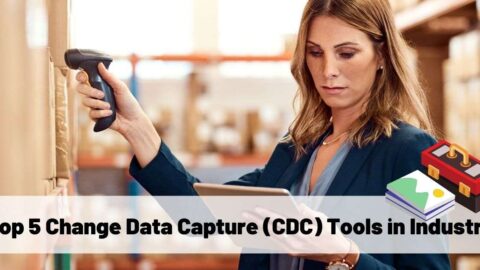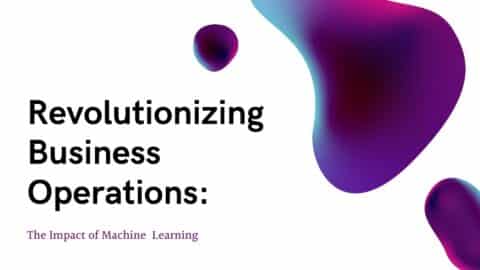Smart Packaging & Its implications in IoT World
Smart packaging is radically altering the way labels, tags, and packages are used while simultaneously establishing a digital link between the client, dealer, manufacturer, logistics provider, and any other parties involved in the process. Nowadays, consumers-us- are concerned not just with the appearance of the wrapping that surrounds the object. But also with how well it retains and protects the contents within. Connected packaging systems are also deal with the issues like convenience, usage, quality assurance, and more using IoT technology.
Table of Contents
What exactly is smart packaging?
Smart packaging connects the physical world with the digital world. A “Digital bridge function” between manufacturers, retailers, customers, and social media channels is most effectively established using smart packaging, and physical objects are somehow digitalized through IoT. Digital technology will enable what is now used to secure and label items to be given an expanding number of additional tasks in the future, as they do today.
Characteristics of Smart Packaging and Connected Packaging in Practice
A smart packaging system has been designed to detect any degradation that may occur during the transition from manufacturing to the stage of consumption, which is becoming increasingly important nowadays. Smart packages with various structural properties and intended uses have a variety of techniques to accommodate these differences.
Time and Temperature Indicators:
The color of the Time-Temperature Indicators changes to provide consumers with more information. They are sensitive to environmental circumstances. The color change of these indicators demonstrates the chemical, enzymatic, microbiological, and mechanical modifications that occur in the substance due to external influences such as heat and humidity. As a result, it has a broad range of potential applications.
Freshness Indicators:
They are devices that allow for the detection of chemical concerns that may occur inside a product as a result of the failure to maintain appropriate storage conditions. It may be used as a box label or as a package tag, depending on the situation. It makes it simple to observe changes in the gas composition that occur within the package.
RFID sensors:
RFID (Radio Frequency Identification Technology) is a system that uses radiofrequency waves to detect and identify objects. And generally, it is used to track a product throughout the manufacturing and distribution process. Also, they can store basic information such as the item’s patch number and more detailed information such as temperature changes, nutritional information, and consumption details. RFID is becoming increasingly popular.
Furthermore, smart packaging or connected packaging frequently incorporates entire information through LEDs, augmented reality, NFCs, microphones, radio chips, or displays, among other technologies.
Besides the food industry, one example is smart medicine packaging. These can be embedded RFID chips, LEDs, and micro speakers that record inventory movement and transmit a warning if they are taken inappropriately. The same is true for packages with NFC chips. When scanned with an NFC device (such as a mobile phone), make it possible to read the package tag and reorder the medication.
What Impact Does Smart Packaging Have on Consumers?
As if the packaging was initially meant to keep the items fresh, the intended usage and market purposes have changed through time as a result. Packaging has evolved into a means of communicating about the safety of a product and the whole product development cycle, from conception through delivery to the end customer. Nowadays, smart packaging plays an integral part in the food industry, primarily in delivering nearly all food goods to end-users across a wide range of markets and preventing the negative impact of any condition that may arise during this phase of public health. Fresh Check®, 3M Monitor Mark®, Vitsab®, PakSense®, and OnVu® are just a few of the companies that make smart packaging for food goods in which time and temperature are essential.
- Smart packaging from It’s Fresh®, Fresh Tag®, and Ripe Sense® alerts customers to the freshness or maturity of their purchasing products and allows them to make informed decisions. When it was demonstrated that these smart packing techniques were capable of accurately calculating and announcing the degree of maturity, they were put through their paces and tested on various items.
- While Ageless-Eye®, Vitalon®, OxySense®, and Samso Chacker® make oxygen and carbon dioxide-sensitive packaging that inform customers by changing color when oxygen or carbon dioxide gasses are detected within the product. Once again, these companies are producing innovative food packaging. In addition, Toxin GuardTM® and Food Sentinel SystemTM® firms are developing smart packaging to detect infections that may contaminate food products from external sources such as the environment.
- Smart packaging and connected packaging options offer smartphone users extra-label information about the device’s origin, manufacturing conditions, and component specifications. The information may be collected by scanning RFID chips and then uploading it to the internet using the appropriate program.
Smart Packing & IoT Industry Cases
To further clarify current developments in the industry, we will provide more information on several creative organizations utilizing smart packaging and the connectivity of the Internet of Things (IoT).
Insignia Technologies: The technology required uses intelligent pigments and inks that change color in response to variations in temperature or CO2 levels. When exposed to gas or ultraviolet light, a color change can be seen. In addition, it delivers fresh food markers and CO2 indicator pigments that tell customers how long things have been in their refrigerators and alert them when food has gone bad.
PragmatIC creates modular electronics for smart packaging applications that are typically inexpensive. Their modular integrated circuits (‘FlexICs’) can be integrated into everyday items, creating the possibility for thousands of smart objects to engage people and their surrounding environment.
EVRYTHNG: It transforms packaging into functional and intelligent digital ID cards, opening new opportunities for consumer contact and serving as a massive data source for products and manufacturing processes. Customers’ input is collected through post-purchase services, allowing producers to control their goods at all stages of logistics and gather consumer feedback.
Blippar is a digital pioneer specializing in augmented reality (AR) and smartphone apps per this. By scanning the item with their Blippar app, the company assists end-customers in determining the quality and provenance of the food they are purchasing. When a user scans a specific food product, the app delivers nutrition information, quality certifications, location information.
Future of Smart Packaging
Smart packaging is evolving to become a quality control platform focusing on a variety of consumer benefits such as product quality, product safety, freshness. And smart packaging and connected packaging, in general, developed in response to our changing lifestyles and as consumers since we all become more demanding, conscious, and intelligent. As a result, the Internet of Things (IoT) industry also researches and develops solutions that meet this demand.
Following the pandemic period of 2020, controlling food quality, cleanliness, and constituents is a critical business advantage to maintain client faith. Because of the pandemic, it is reasonable to predict that those that make use of developing technology to offer themselves an edge in a competitive marketplace will be the ones who manage to keep customers coming back. Whether it’s faster shipping or more engaging experiences, the businesses that embrace innovation the fastest will be the ones that succeed in the future era of retail.
Writing, researching, and learning about project management and tech.










